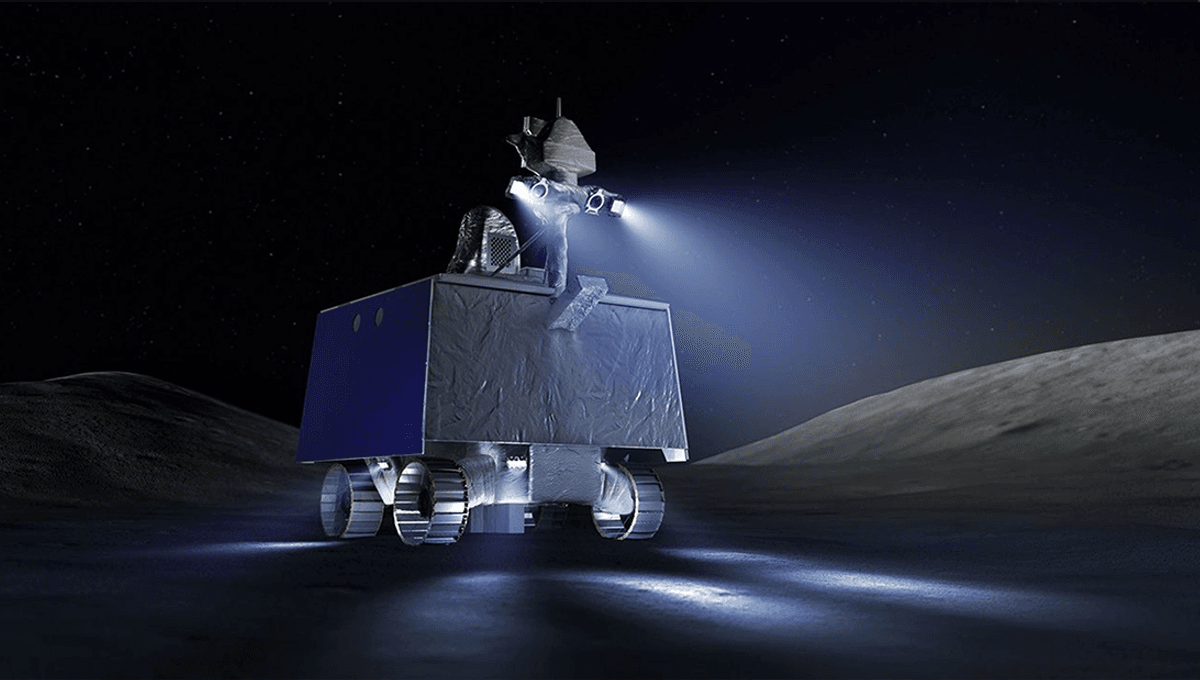
Landing on another body in the Solar System is a tough business. Despite many successful touchdowns throughout history, spacecraft sent to land on the lunar surface still regularly fail in the final moments. Meanwhile on Mars, the Spirit rover sent by NASA became stuck in the planet’s soft sand after its wheels broke through a crust.
A new study suggests a potential common cause: we have misunderstood the physics on other objects of the Solar System, and the complexity of their surfaces.
When designing missions to land on the Moon or another planet, space agencies tend to look for similar environments here on Earth for testing. Previous tests have seen rovers traverse deserts or the specifically-designed terrain at NASA Jet Propulsion Laboratory’s (JPL’s) “Mars Yard”.
“The size and shape of rocks in the visual field – will they turn into obstacles or not?” Bryan Martin, flight software and test beds manager at JPL, said of one run of experiments.
“We test a lot of that, figure out what kinds of things to avoid. What we have safely traversed around here has informed rover drivers in planning their traverses on Mars. We’ve done so much testing on the ground we can be confident in it. It works.”
In order to compensate for Mars’s low gravity, scientists have reduced the mass of the experimental rovers, to get a better sense of how they will handle the terrain. While this may seem like a sensible step to simulating a mission, the new paper suggests that these tests may lead to “overoptimistic” results.
“Consider, for instance, the Curiosity test,” the team writes in their paper, explaining that the test rover was stripped down to reduce its mass from 907 kilograms (2,000 pounds) to 340 kilograms (750 pounds), making it identical to the weight it would have on the Red Planet.
“Then, owing to the higher gravitational pull acting on each soil particle in California’s Mojave Desert, the terrain is bound to display a higher yield strength relative to Mars and it could therefore support higher shear stress without yielding, effectively providing an optimistic trafficability assessment. Thus, reducing the mass of the rover, in isolation, is insufficient, unless the soil is changed to account for the lower gravitational pull at work on the targeted planet, moon, or asteroid.”
In short, space agencies including NASA and the China National Space Administration have been focusing on the effect of lower gravity on the rover, and have neglected the impact of the lower gravity on the soil, dust, and sand of other Solar System bodies.
While working on NASA’s now-discontinued Volatiles Investigating Polar Exploration Rover (VIPER) mission, the team used an open-source physics simulator called Project Chrono, developed at UW-Madison. Doing so, they realized that there was a large discrepancy between simulating VIPER on “squishy” lunar soil and the tests conducted by NASA on Earth.
“In retrospect, the idea is simple: We need to consider not only the gravitational pull on the rover but also the effect of gravity on the sand to get a better picture of how the rover will perform on the moon,” Dan Negrut, a professor of mechanical engineering at UW-Madison, explained in a statement. “Our findings underscore the value of using physics-based simulation to analyze rover mobility on granular soil.”
Investigating further, the team found that single-wheel tests may yield more reliable results than full rover tests, while reducing the mass in full rover tests may also be unnecessary.
“Our results suggest that there was no need to keep the geometry of the rover yet reduce its mass,” the team writes. “Indeed, the nominal vehicle produced the same slip versus slope curves on the Moon and on Earth.”
The team suggests that missions should rely “heavily on physics-based terramechanics models” when designing future rovers.
“It’s very unusual in academia to produce a software product at this level,” Negrut added. “There are certain types of applications relevant to NASA and planetary exploration where our simulator can solve problems that no other tool can solve, including simulators from huge tech companies, and that’s exciting.”
The study is published in the Journal of Field Robotics.
Source Link: NASA Has Made A Sizable Error In Lunar And Martian Physics, Study Suggests